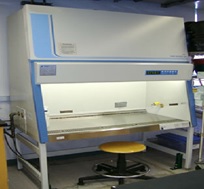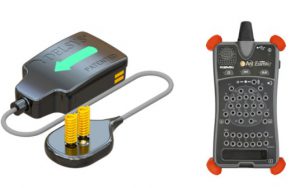Lab Facilities
1- ONCOLOGY
Purpose of the Lab
Oncology Lab seeks to understand the proteomics expression and response and resistance to chemotherapy, radiotherapy and other conventional methods. Through comprehensive proteomic analyses we investigate the underly molecular signaling pathways for the initiation, promotion and development of tumor cells. Inflammation and immune response and resistance has also been investigated to discover the possible treatment regimens for the prevention and treatment of cancer. Our work has provided the foundation for a molecular response-drug interation, where therapeutic decisions are made not based on imaging but based on molecular responses derived from liquid biopsies. Overall, our group focuses on studying the effect of natural product on the tumore, metastatic and immune cascade in carcinogen and cell developed tumor model. We are in collaboration with two international labs, Lab of Cellular Biochemistry at Kyungpook National University, Daegu, South Korea and Institute for Research and Medical Consultations, Imam aburehman bin Faisal University, Dammam, Saudi Arabia.
Research Areas: Cancer models, Cancer proteomics, Drug resistance, Signal transduction, Tumor survival
Lab Incharge
adeeb.shehzad@smme.nust.edu.pk
Facilities Available
- Cell culturing room
- Spectrophotometer
- Microscopy
- Western blot
- PCR
- Animal house
2-BIOCHEMISTRY
Purpose of the Lab
Biochemistry lab is general purpose lab typically contain chemicals, glassware, centrifuges, spectrometers, laminar flow air cabinets and further equipment. It includes a microbiology section, drug development and nanobiotechnology section, geneomic and proteomic extraction facility and a mice keeping facility. The research focus is on the natural product extraction, anticancer and antimicrobial Nanocarriers and mice disease model designing
| Microbial cell culturing room | |
Specs:
|
 |
| Nanobiotechnology Section | |
Specs:
|
 |
Lab Incharge
Dr. Nosheen Fatima Rana
nosheen.fatima@smme.nust.edu.pk
Facilities Available
Details about commercial testing:
- Development of mice disease model for research purposes (Tumor models, Infection models, depression models etc)
Types of Tests
- Preclinical studies of drugs and nanomedicines
Rates
- Tumor model: Mice group of (10) = Rs 7500
- Infection mode: Mice group of (20) = Rs 15000
- Antimicrobial testing of nanoparticles: Testing 5 samples = Rs 3500
Available timings
- 10 a.m. to 5 p.m
Booking procedure / SOP:
- Discussion of the Sample type and testing with P.I
- Booking slot prior at least two days prior to start work
- Models will be designed after payment is done.
3- BRAIN COMPUTER INTERFACE LABORATORY
Purpose of the Lab
Brain Computer Interface Lab is equipment with modern technology instruments used to acqire Brain signals. Main objective of this setup is to create a communication path between brain and computer. It includes EEG electrodes, ECG electrodes, EEG Hats, amplifiers, display moniters, Sensors and may other add ons depending upon the task specified. The research focus is on the efficiency of the EEG/ECG signal extracted from the scalp/heart and how it can be fed to the computer effectively to perform specified task.
Lab Incharge
Dr. Asim Waris
asim.waris@smme.nust.edu.pk
Facilities Available
1-Tobii Pro eye trackers:
Tobii Pro eye trackers are acknowledged for their exceptional tolerance for substantial, dynamic head movement, placing minimal restrictions on subjects’ natural movements. This makes them ideal for infant and child studies as well as atypical populations.
Researchers can use this tool to investigate spatial relations, problem solving, number sense, language acquisition, and cause and effect relationships, as well as social interaction and gaze following. Eye tracking data can help explore infants’ ability to categorize visual, linguistic, and auditory events, and scan dynamic human faces.Among older children and adolescents, researchers study cognitive processes like executive function and social interaction. Due to the more portable, lightweight design of today’s eye tracking systems, these studies can now be carried out in real-world environments.
Specifications:
- Offers multiple sampling rate options up to 600 Hz.
- Screen-based eye tracker, capturing gaze data at speeds up to 250 Hz.
2- 32-channel EEG system ARC ESSENTIA
3- Trigno Research+
4- Trigno Avanti Sensor
5- Trigno Spring Contact
4- HUMAN SYSTEMS
Purpose of the Lab
Human Systems Lab is equipment with instruments used to develop control systems that are similar to human body. Main objective of this setup is to create a system that can wither help human in movement related task or completely replace the effected human limb. It includes EMG electrodes, ECG signal processing equipment, Oscilloscopes, function generators, power supplies, soldiering apparatus. The research focus is on the efficiency of the EMG signal or the developed system’s output for a specified task.
Lab Incharge
Dr. Asim Waris & Dr. Ahmed Fuwad
asim.waris@smme.nust.edu.pk & ahmed.fuwad@smme.nust.edu.pk
Facilities Available
- ADIntruments POWERLAB 26T
- Oscilloscope (GDS-2062)
- Function Generator (Escort 3136A)
- Power Supply
- Soldering Station
5- PROSTHETICS & IMPLANTOLOGY
The Prosthetics and Implantology lab at SMME aims to develop advanced prosthetics and orthotics for improving the quality of life. Researchers in our lab focus on creating biomaterials with more biocompatibility and light weight, using different composites. Precise anatomical replication is achieved through the State-of-Art 3D modelling equipment to ensure optimal fitness and functionality. Advance coating devices are used to enhance the durability significantly improve the life span of the prosthetics. Extensive tests and modifications on various prototypes are conducted to ensure their proficiency and efficacy.
Lab Incharge
Dr. Nabeel Anwar
nabeel.anwar@smme.nust.edu.pk
Facilities Available
-
-
- 3D Printer
- Laser Cutter
- Dip Coater
- Electrospinning device
- Spin Coater
-
6- NEUROGENOMICS AND PROTEOMICS
The Neurogenomics and Proteomics lab at SMME is working on developing diagnostic and therapeutic interventions for various neurological and psychiatric disorders. Our focus is to assist the growing Pakistani population at risk of developing these disorders through accurate, effective and budget friendly, interventions. Our current studies use samples from humans, animal models, and cell lines. We use an array of molecular techniques to target the genomic, transcriptomic, and proteomic components of the cells and identify the implications of our interventions on a molecular level. We are also developing devices to ease the diagnosis of Alzheimer’s and other neurodegenerative disorders with the assistance of our collaborators in Pakistan, the USA, and Europe.
Lab Incharge
Dr. Saima Zafar & Dr. Aneeqa Noor
saima.zafar@smme.nust.edu.pk & aneeqa.noor@smme.nust.edu.pk
Facilities Available
We are developing animal models of Alzheimer’s disease, Parkinson’s disease, Diabetes Mellitus-associated cognitive deficits, Depression, Schizophrenia etc. We perform qualitative and quantitative analysis of DNA, RNA, and proteins using PCR, gel electrophoresis, immunoblotting, and mass spectrometry. Cell culture facilities are also available. Moreover, we are developing and characterizing nanoparticles for drug delivery across the blood-brain barrier and optimizing IR/ photobiomodulation devices for diagnostic and therapeutic purposes.



